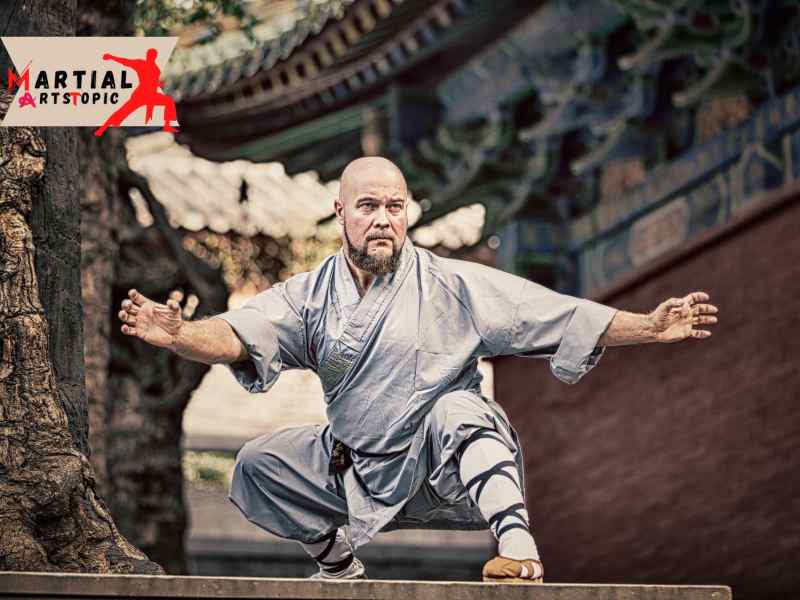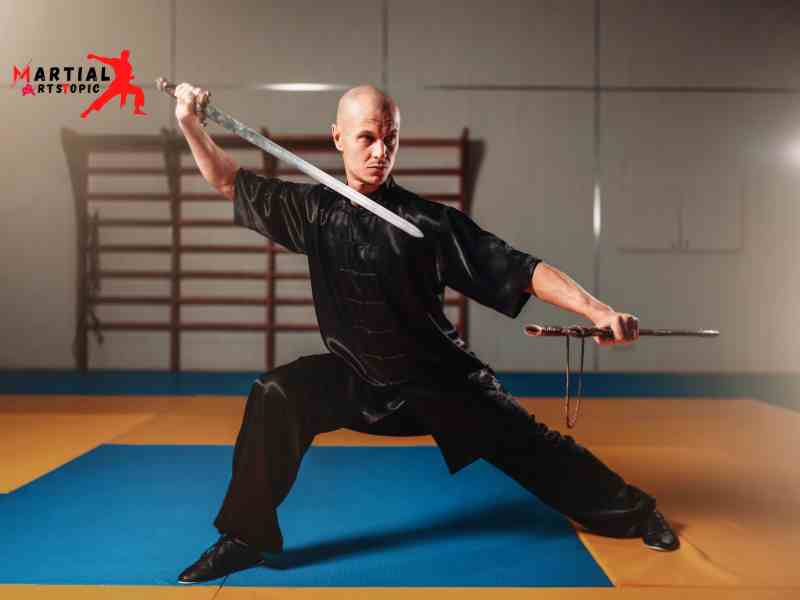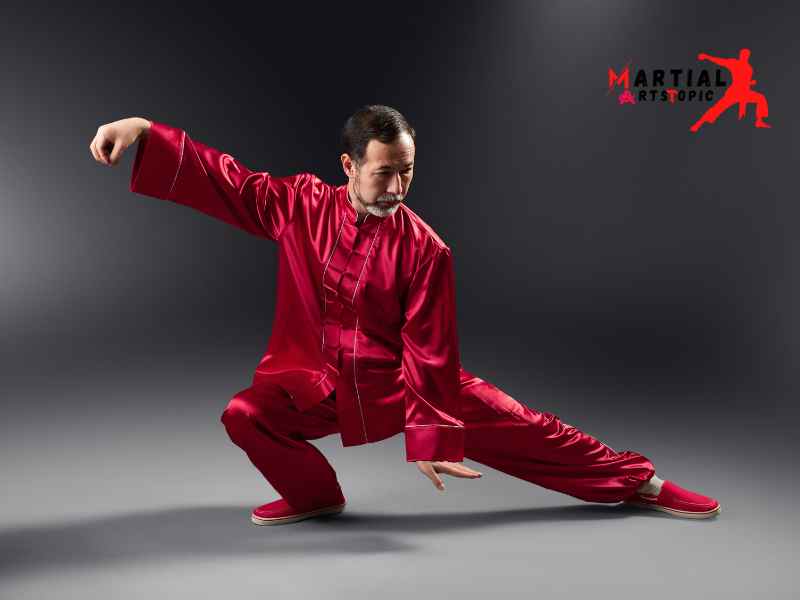
Unlocking the Secrets of Shaolin Wushu
What is Shaolin Wushu? The Secrets of Shaolin Wushu: Unraveling the History and Philosophy Shaolin Wushu, a martial art form that originated in China, is known for its impressive physical techniques and deep-rooted philosophy. For centuries, Shaolin Wushu has captivated the minds and bodies of practitioners and enthusiasts alike. The rich history and philosophy behind Shaolin Wushu, delving into its origins, development, and the principles that guide its practitioners.
The Origins of Shaolin Wushu
Shaolin Wushu traces its roots back to the Shaolin Temple, a Buddhist monastery located in Henan province, China. The temple, which was established in the 5th century, became famous as a center for Zen Buddhism and martial arts training.
Legend has it that Bodhidharma, an Indian monk, traveled to China and arrived at the Shaolin Temple in the 6th century. Recognizing the physical weakness of the monks, Bodhidharma developed a series of exercises and combat techniques to improve their strength and self-defense capabilities. These exercises formed the foundation of what would later become known as Shaolin Wushu.
The Development of Shaolin Wushu
Over the centuries, Shaolin Wushu developed and expanded, incorporating various styles and techniques. It became a comprehensive system that encompassed both unarmed combat and the use of weapons. Its practitioners, known as Shaolin monks, dedicated their lives to mastering the art and passing down their knowledge from generation to generation.
Shaolin Wushu gained widespread recognition during the Ming Dynasty (1368-1644), when the Shaolin Temple became an important training ground for soldiers and warriors. It was during this time that Shaolin Wushu’s reputation for its powerful movements grew, attracting students and disciples from far and wide.
The Philosophy of Shaolin Wushu

Shaolin Wushu is not merely a physical practice; Someone deeply rooted it in philosophy and spirituality. Central to its philosophy is the concept of “Chan,” which is the Chinese word for Zen. Chan emphasizes mindfulness, self-discipline, and the cultivation of inner peace.
In Shaolin Wushu, practitioners strive to achieve a harmonious balance between body, mind, and spirit. Through rigorous physical training, meditation, and the study of Buddhist teachings, Shaolin monks aim to transcend their limitations and connect with a higher state of consciousness.
The Principles of Shaolin Wushu
A set of principles that shape its practice and philosophy guided Shaolin Wushu. These principles include:
- Wu De (Martial Virtue): Shaolin Wushu emphasizes the cultivation of virtues such as respect, humility, and integrity. They teach practitioners to use their skills responsibly and ethically.
- Yi (Intention): Intention plays a crucial role in Shaolin Wushu. Every movement is driven by a focused and clear intention, allowing practitioners to channel their energy effectively.
- Jing (Stillness): In the midst of intense physical movements, Shaolin Wushu encourages practitioners to find stillness within themselves. This stillness allows for heightened awareness and the ability to respond swiftly and efficiently.
- Li (Power): Shaolin Wushu emphasizes the development of physical power, but also recognizes the importance of cultivating inner strength and mental fortitude.
What is Shaolin Wushu?
Shaolin Wushu, often referred to as Shaolin Kung Fu, is an ancient Chinese martial art that originated at the Shaolin Temple in Henan province. It is renowned for its dynamic and fluid movements, as well as its emphasis on both physical and mental discipline. Shaolin Wushu encompasses a wide range of fighting techniques, including striking, grappling, and weaponry, making it a comprehensive and versatile martial art. Practitioners of Shaolin Wushu not only develop exceptional physical strength and agility, but also cultivate inner peace and focus through meditation and mindfulness practices. This iconic martial art has gained global popularity for its rich history, cultural significance, and profound impact on the world of martial arts.
The Secrets of Shaolin Wushu
What is Shaolin Wushu? Shaolin Wushu continues to fascinate and inspire people around the world. Its rich history, intricate techniques, and profound philosophy make it a truly unique martial art form. By unraveling the secrets of Shaolin Wushu, we gain a deeper understanding of its origins, development, and the principles that guide its practitioners.
Whether you are a martial arts enthusiast, a fitness enthusiast, or someone interested in exploring the depths of philosophy and spirituality, Shaolin Wushu offers a captivating journey. So, embark on this journey and unlock the secrets of Shaolin Wushu, discovering the power and wisdom that lie within this ancient martial art form.
To learn more about Shaolin Wushu and its profound history and philosophy, join us as we dive deeper into this fascinating world. Explore the techniques, understand the principles, and unlock the secrets that have made Shaolin Wushu a timeless art form.
The Different Styles of Shaolin Wushu
The Different Styles of Shaolin Wushu Shaolin Wushu, also known as Shaolin Kung Fu, is an ancient Chinese martial art that has gained worldwide recognition for its grace, power, and complexity. With a history spanning over 1,500 years, Shaolin Wushu has developed into a comprehensive system of self-defense, physical fitness, and spiritual cultivation.
One of the most fascinating aspects of Shaolin Wushu is the wide variety of styles it encompasses. Each style has its unique characteristics, techniques, and training methods, making the exploration of Shaolin Wushu an exciting and rewarding journey for practitioners and enthusiasts alike.
- Northern Shaolin Wushu: Known for its long-range kicks, acrobatic movements, and elaborate hand techniques, Northern Shaolin Wushu is a visually impressive style that emphasizes speed, agility, and precision. Practitioners of this style often perform breathtaking aerial maneuvers and complex combinations, showcasing the art’s artistic beauty and athletic prowess.
- Southern Shaolin Wushu: Contrasting the Northern style, Southern Shaolin Wushu focuses on close-quarter combat, powerful strikes, and intricate footwork. This style emphasizes practical self-defense techniques and efficient use of energy. Its firm stances, quick hand techniques, and low kicks characterize southern Shaolin Wushu, making it a formidable and practical fighting system.
- Wing Chun: Developed by a female Shaolin nun, Wing Chun is an elegant and efficient style that emphasizes close-range combat and quick, simultaneous attacks and defense. Wing Chun practitioners use a unique centerline theory, redirecting their opponent’s force while maintaining a powerful defense. We know this style for its economy of movement, making it suitable for practitioners of all ages and body types.
- Chen-style Tai Chi: Although not traditionally considered a Shaolin Wushu style, Chen-style Tai Chi has strong roots in the Shaolin Temple. Slow, continuous movements and explosive bursts of power characterized this style. Chen-style Tai Chi is renowned for its health benefits, stress reduction, and cultivation of internal energy (Qi).
- Shaolin Praying Mantis: Inspired by the movements of a mantis, this style combines agility, precision, and deceptive footwork. Shaolin Praying Mantis practitioners utilize rapid strikes, joint locks, and throws, making it a versatile and effective fighting style. Training in this style also improves flexibility, coordination, and reflexes.
- Shaolin Drunken Fish: A style that mimics the movements of a drunken person. Unpredictable footwork, exaggerated gestures, and deceptive attacks characterize Shaolin Drunken Fish. Despite its seemingly chaotic nature, this style requires a high level of skill, coordination, and balance. They often perform it in a playful and entertaining manner, making it a favorite among spectators.

These are just a few examples of the diverse styles within the world of Shaolin Wushu. Each style offers its unique benefits, challenges, and philosophies, providing practitioners with a rich and holistic martial arts experience. Whether they draw you to the beauty of Northern Shaolin Wushu, the practicality of Southern Shaolin Wushu, or the grace of Wing Chun, there is a style of Shaolin Wushu that will resonate with you.
By exploring the different styles of Shaolin Wushu, you can deepen your understanding of this ancient martial art, improve your physical fitness, and cultivate your mind and spirit. So, why not embark on this fascinating journey and experience the power and beauty of Shaolin Wushu for yourself?
Benefits of Practicing Shaolin Wushu
Shaolin Wushu, an ancient Chinese martial art form, has captivated the world with its powerful techniques, graceful movements, and deep-rooted philosophy. Beyond its undeniable appeal as a combat sport, Shaolin Wushu offers practitioners a wide range of physical, mental, and spiritual benefits. In this blog, we will explore the remarkable advantages of practicing Shaolin Wushu and how it can positively affect your life.
Physical Fitness Enhancement
Shaolin Wushu serves as a comprehensive workout regime that engages every muscle group in the body, promoting overall physical fitness. The combination of strength-building exercises, endurance training, flexibility drills, and cardiovascular conditioning helps practitioners achieve peak physical form. Regular practice fosters improved balance, coordination, agility, and speed, enabling practitioners to become more adept in their movements both inside and outside the training hall.
Mental Well-being
The benefits of Shaolin Wushu extend far beyond the physical realm. By focusing on the precise execution of techniques, practitioners develop enhanced concentration and mental clarity. The meditative aspects of Shaolin Wushu training help alleviate stress, anxiety, and depression, promoting a calmer and more balanced state of mind. As practitioners progress in their training, they cultivate discipline, patience, perseverance, and a strong sense of self-confidence, which can be applied to various aspects of life.
Self-Defense Skills
One of the most apparent benefits of Shaolin Wushu practice is its effectiveness as a self-defense system. By mastering various defensive and offensive techniques, practitioners gain the skills and knowledge needed to protect themselves in real-life situations. The training emphasizes situational awareness, quick reflexes, and precise execution of techniques, ensuring practitioners are well-equipped to handle potential threats. The confidence gained through training not only enhances personal safety but also promotes a sense of empowerment and peace of mind.
Cultural Enrichment
Something deeply rooted Shaolin Wushu in Chinese culture and history, providing practitioners with a unique opportunity to explore and appreciate the rich heritage of the martial art form. The practice encompasses not only physical training but also the study of traditional forms, philosophy, and values. By immersing themselves in the learning journey, practitioners gain a profound appreciation for the principles of respect, humility, and harmony, fostering a deep connection with the ancient traditions and cultural values associated with Shaolin Wushu.
Community and Camaraderie
Practicing Shaolin Wushu provides an avenue for individuals to connect with like-minded people who are passionate about martial arts. The training environment often fosters a strong sense of camaraderie and mutual support, creating a supportive community. The shared commitment, challenges, and accomplishments within the group create lasting friendships and a supportive network that extends beyond the training hall.
Weapons Training in Shaolin Wushu
Shaolin Wushu is a traditional Chinese martial art that has gained worldwide recognition for its dynamic movements, rigorous training methods, and profound spiritual philosophy. Weapons training is an integral part of Shaolin Wushu, showcasing the beautiful and deadly artistry of combat. In this blog post, we delve into the fascinating world of weapons training in Shaolin Wushu, exploring its history, significance, and the weapons commonly used.
The Rich History of Shaolin Wushu Weapons Training
Weapons training has been an integral part of Shaolin Wushu since its inception over 1,500 years ago. Originating in the Shaolin Temple in Henan province, China, the monks developed this martial art as a means of self-defense against bandits and other threats. The use of weapons was incorporated to enhance combat effectiveness and to preserve the knowledge of ancient warfare techniques.
Significance of Weapons Training in Shaolin Wushu
Weapons training in Shaolin Wushu serves multiple purposes. Firstly, it helps practitioners develop exceptional physical strength, coordination, and flexibility. Secondly, it cultivates mental focus, discipline, and precision. Lastly, it enables students to understand and master different combat strategies and techniques, expanding their overall understanding of martial arts principles.
Commonly Used Weapons in Shaolin Wushu
There is a wide variety of weapons utilized in Shaolin Wushu, each with its unique characteristics and techniques. Some of the most commonly used weapons include:
- a) Staff (Gun): The staff is one of the foundational weapons in Shaolin Wushu, representing a long-reaching weapon that enhances striking power, agility, and defense.
- b) Sword (Jian): The sword is regarded as the “King of Weapons” in Chinese martial arts. Practicing with the sword requires precision, grace, and swift footwork.
- c) Spear (Qiang): The spear, known for its versatility and speed, helps practitioners develop explosive power, coordination, and footwork.
- d) Broadsword (Dao): The broadsword is a powerful weapon that requires strength and agility. Its curved blade enhances cutting power and allows for fluid movements.
- e) Chain Whip (Jiujie Bian): The chain whip is a flexible weapon that demands precise control and coordination. It is known for its lightning-fast strikes and unpredictable movements.
Training Methods and Techniques
Shaolin Wushu weapons training involves a systematic approach that starts with basic stances, grips, and footwork. As students progress, they learn various techniques, such as blocking, striking, thrusting, and sweeping. The training sessions also focus on forms (sequences of movements), sparring drills, and partner routines to enhance practical application and combat skills.
Benefits of Weapons Training in Shaolin Wushu
Engaging in weapons training in Shaolin Wushu offers numerous benefits. It improves physical fitness, develops self-discipline, enhances mental focus, and cultivates self-confidence. It also enables practitioners to appreciate the artistry and cultural heritage associated with these ancient weapons.
Shaolin Wushu: Essential Techniques and Training Tips
Shaolin Wushu: Essential Techniques and Training Tips Welcome to our comprehensive guide on Shaolin Wushu! Whether you’re a seasoned martial artist or a beginner looking to delve into the world of martial arts, Shaolin Wushu offers a rich history and a wide array of techniques that are both physically and mentally stimulating.
Essential Techniques of Shaolin Wushu
Shaolin Wushu comprises a vast array of techniques, each with its own unique attributes and applications. Some essential techniques include:
- Stances: Shaolin Wushu places great importance on stances, which form the foundation of the practitioner’s stability, balance, and power. Common stances include horse stance, bow stance, and cat stance.
- Hand Strikes: Hand strikes in Shaolin Wushu encompass a variety of techniques, including punches, palm strikes, and finger strikes. These striking techniques are executed with precision and speed, making them effective in both offensive and defensive situations.
- Kicks: Kicking techniques in Shaolin Wushu are dynamic and versatile, ranging from high-flying aerial kicks to low, sweeping kicks. Practitioners develop flexibility and strength in their lower body through the mastery of these techniques.
- Forms (Katas): Forms, also known as katas, are choreographed sequences of movements that simulate combat scenarios. Practitioners of Shaolin Wushu perform forms to hone their technique, agility, and mental focus.
Training Tips for Shaolin Wushu
If you’re considering embarking on the journey of learning Shaolin Wushu, here are some valuable training tips to guide you along the way:
- Find a Qualified Instructor: Learning Shaolin Wushu from a qualified instructor is crucial for mastering the techniques and understanding the philosophy behind this martial art.
- Focus on Fundamentals: Mastery of the fundamental stances, strikes, and kicks is essential before progressing to more advanced techniques. Consistent practice and attention to detail are key to honing these fundamentals.
- Embrace Discipline and Patience: Shaolin Wushu demands discipline and patience. It takes time and dedication to refine the intricate movements and cultivate the mental fortitude required for this martial art.
- Incorporate Strength and Flexibility Training: besides technique practice, integrating strength and flexibility training into your regimen will enhance your overall performance in Shaolin Wushu.
- Cultivate Mental Focus: Mental focus and concentration play a vital role in mastering Shaolin Wushu. Practice meditation and mindfulness to develop a calm and focused mind.
Conclusion
Shaolin Wushu is not just a martial art, but a way of life that embodies discipline, strength, and spirituality. The ancient techniques and philosophies passed down through generations have shaped Shaolin Wushu into a revered and respected practice around the world. From its humble beginnings in the Shaolin Temple to its widespread popularity today, Shaolin Wushu continues to inspire individuals to push their physical and mental limits, fostering a sense of self-improvement and inner peace. Whether one chooses to practice Shaolin Wushu for self-defense, physical fitness, or personal growth, it is undeniable that this ancient art form holds a special place in history and in the hearts of its practitioners.
